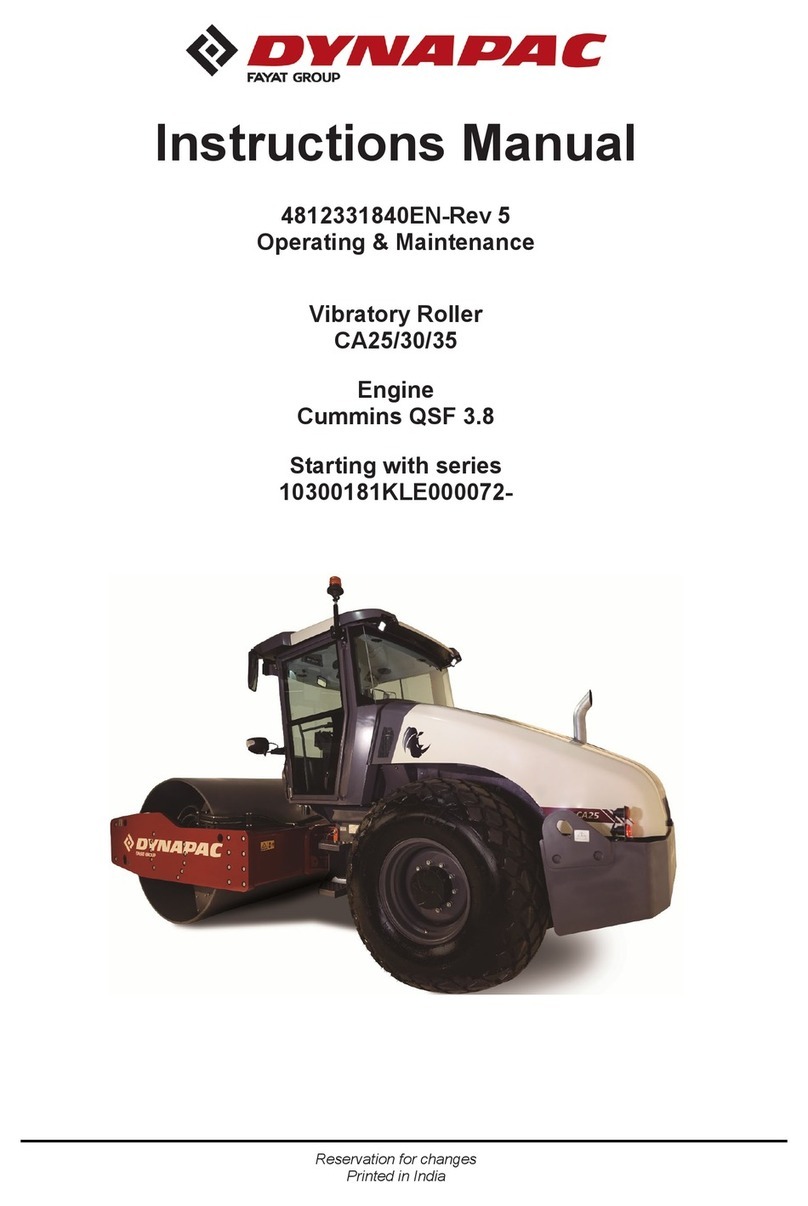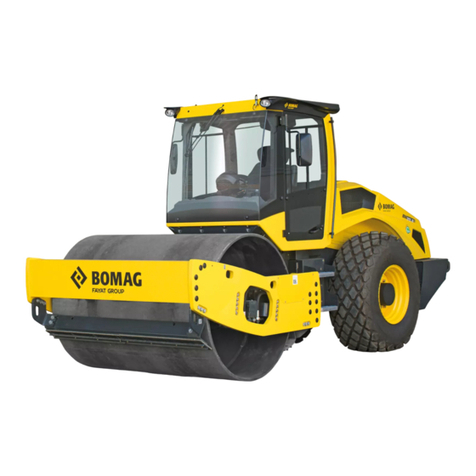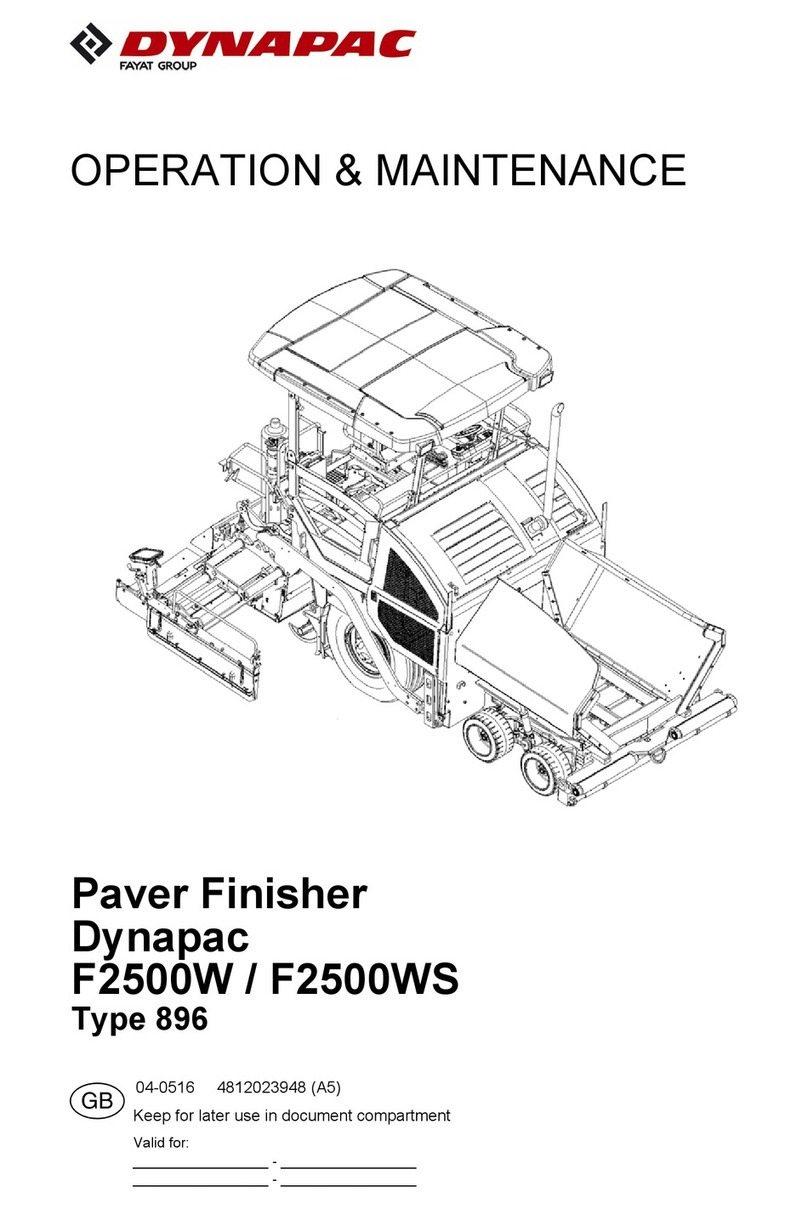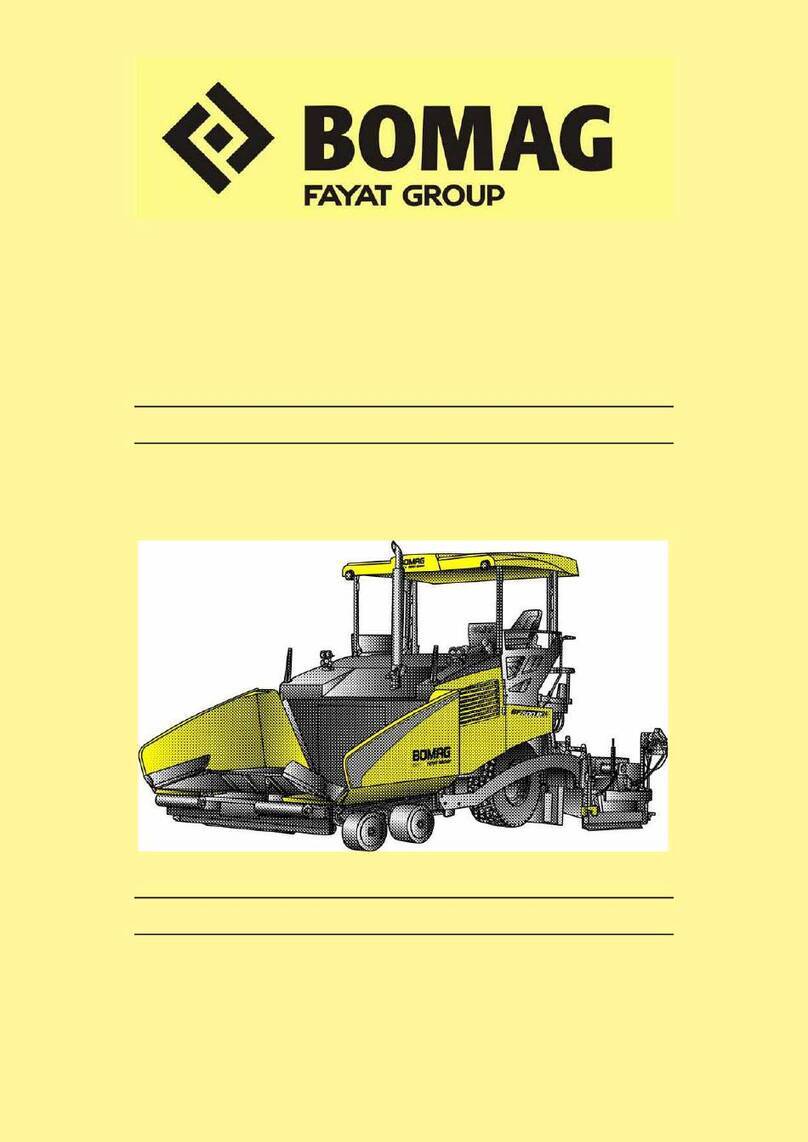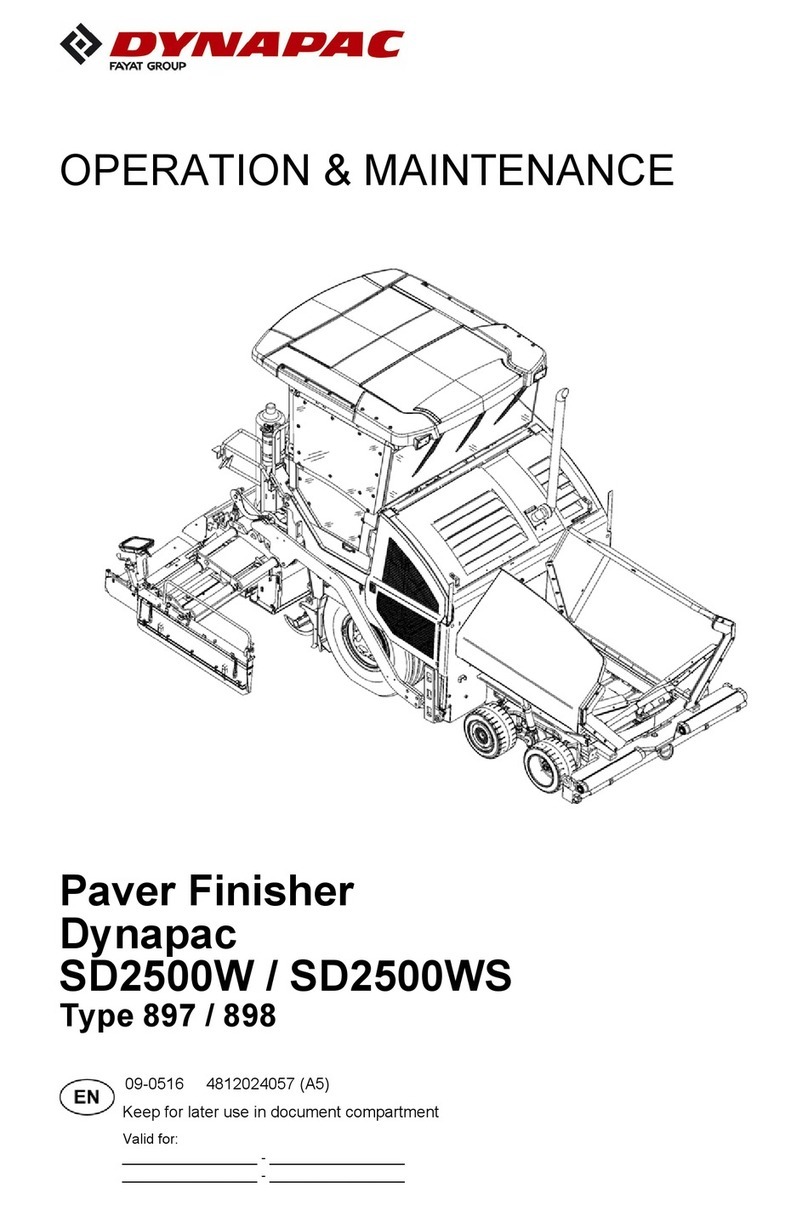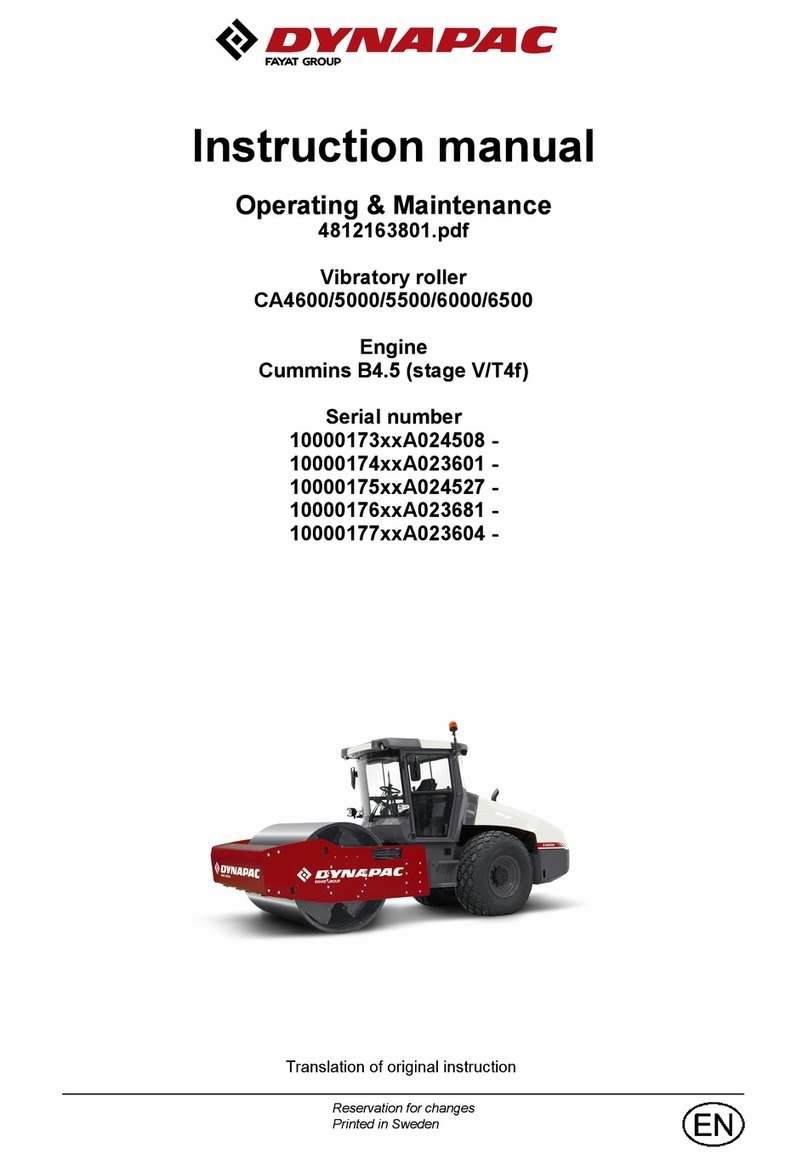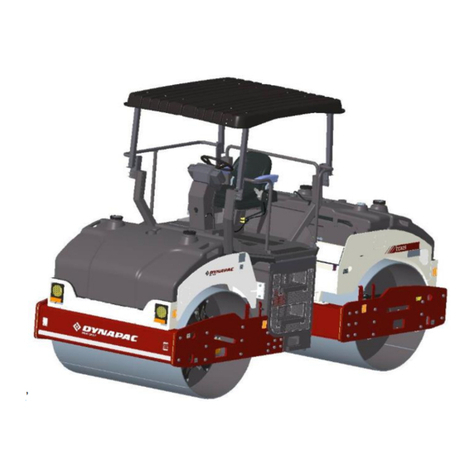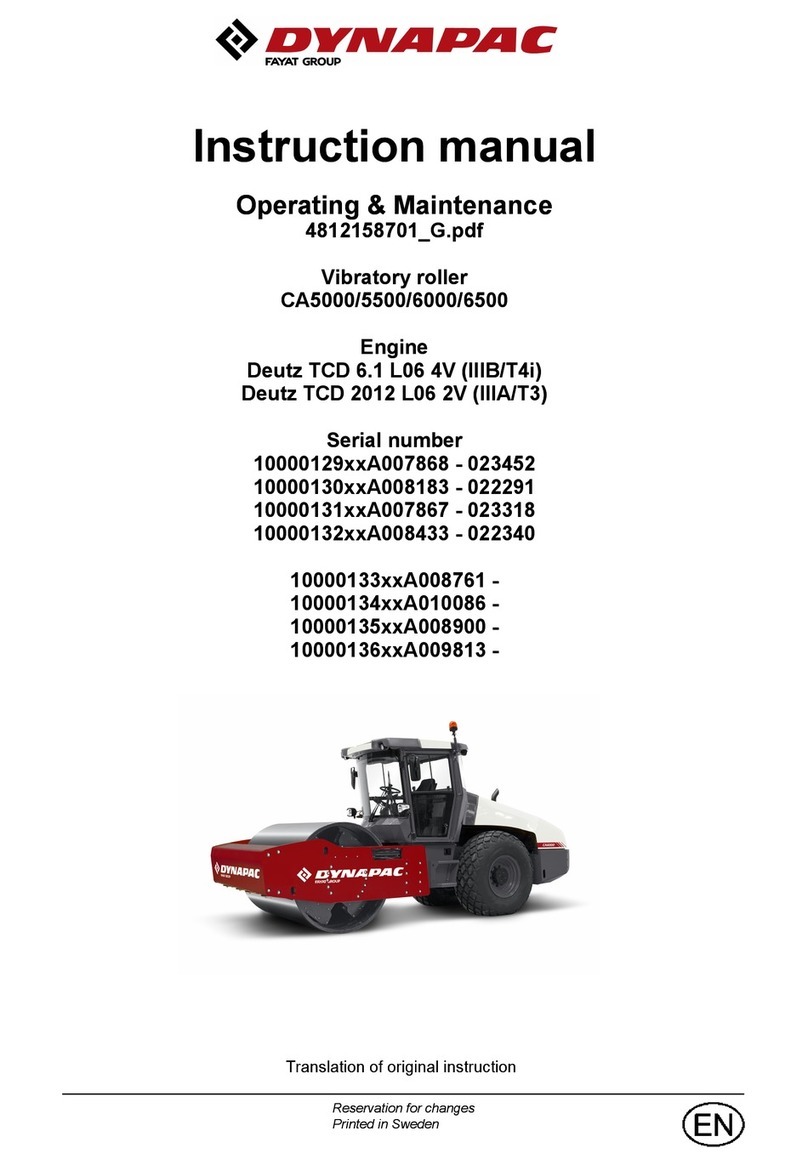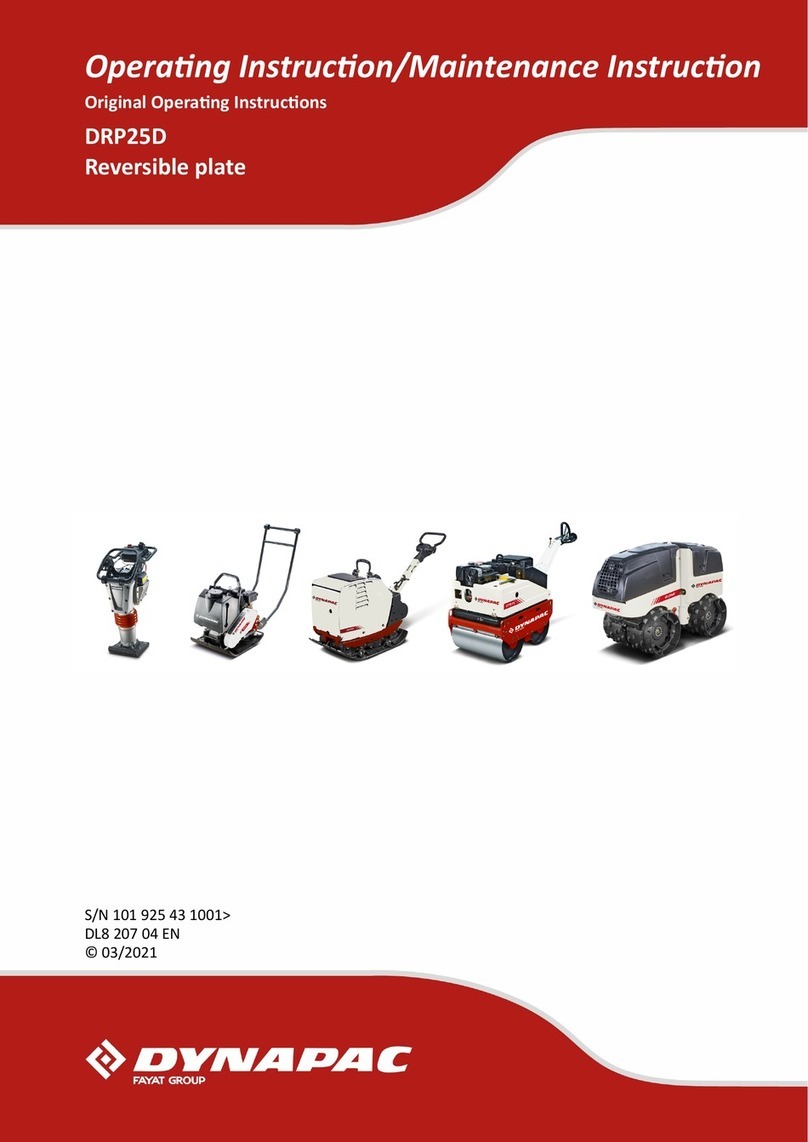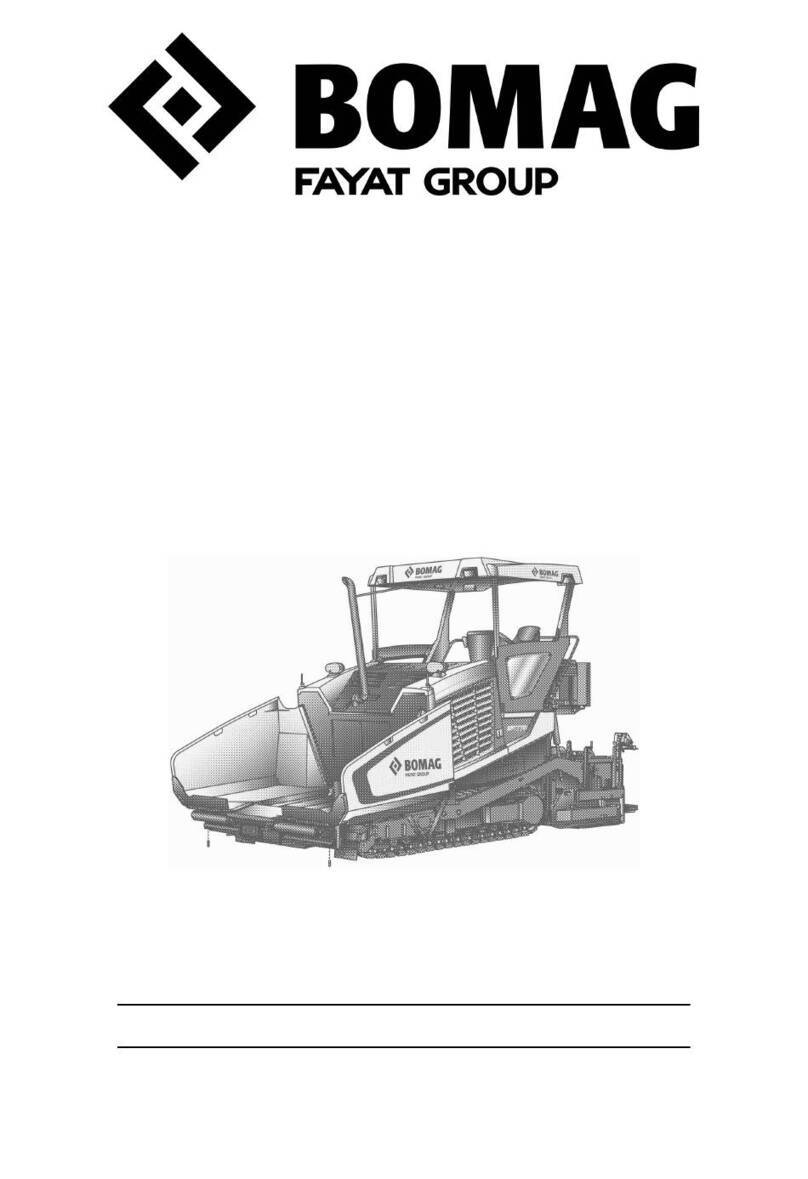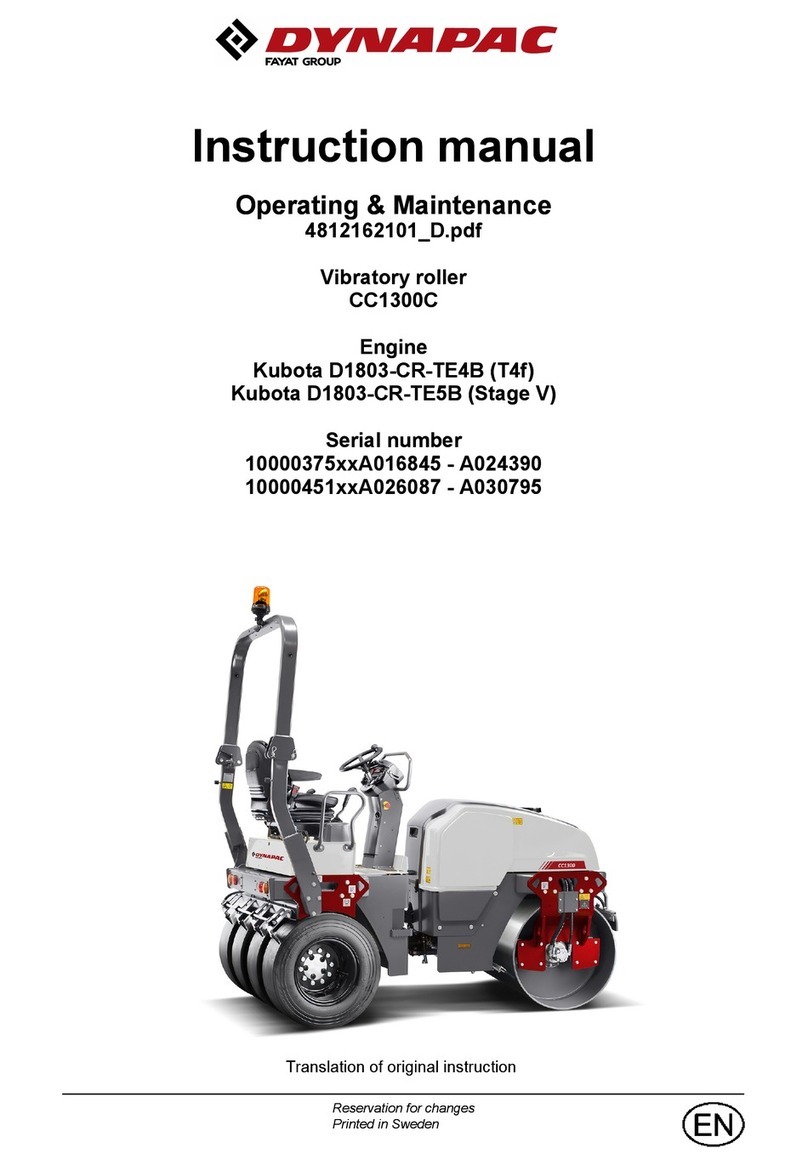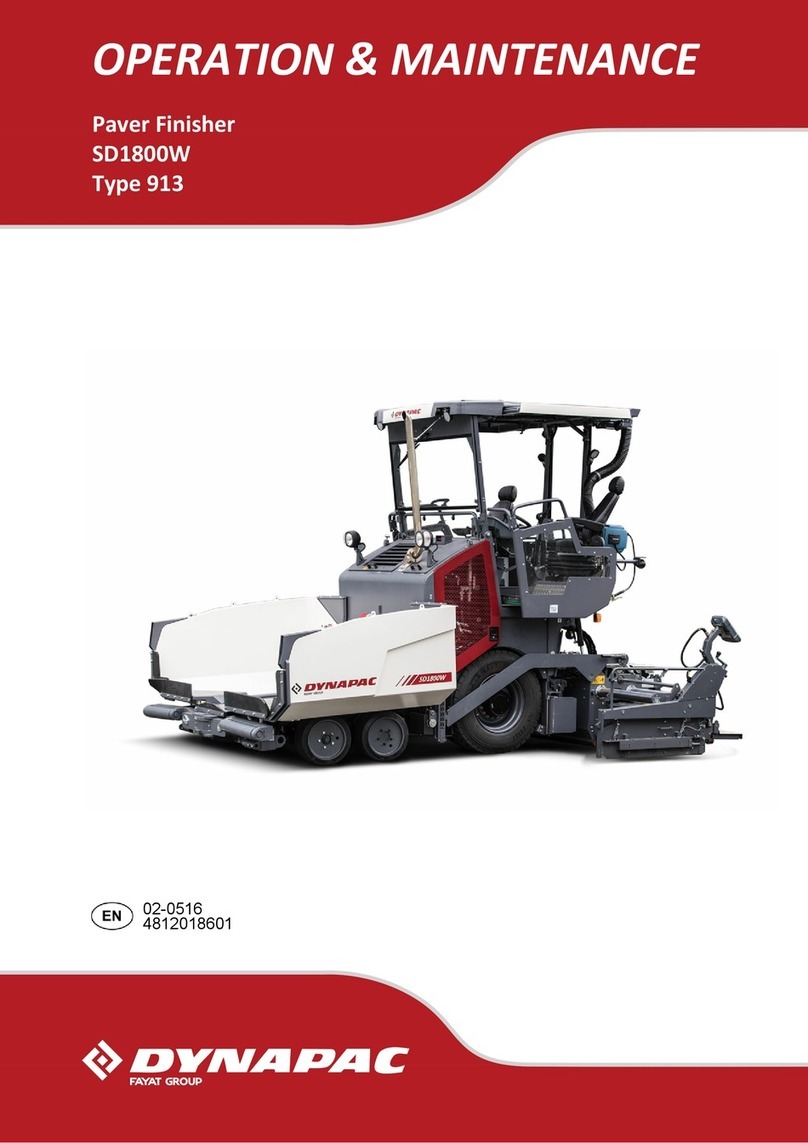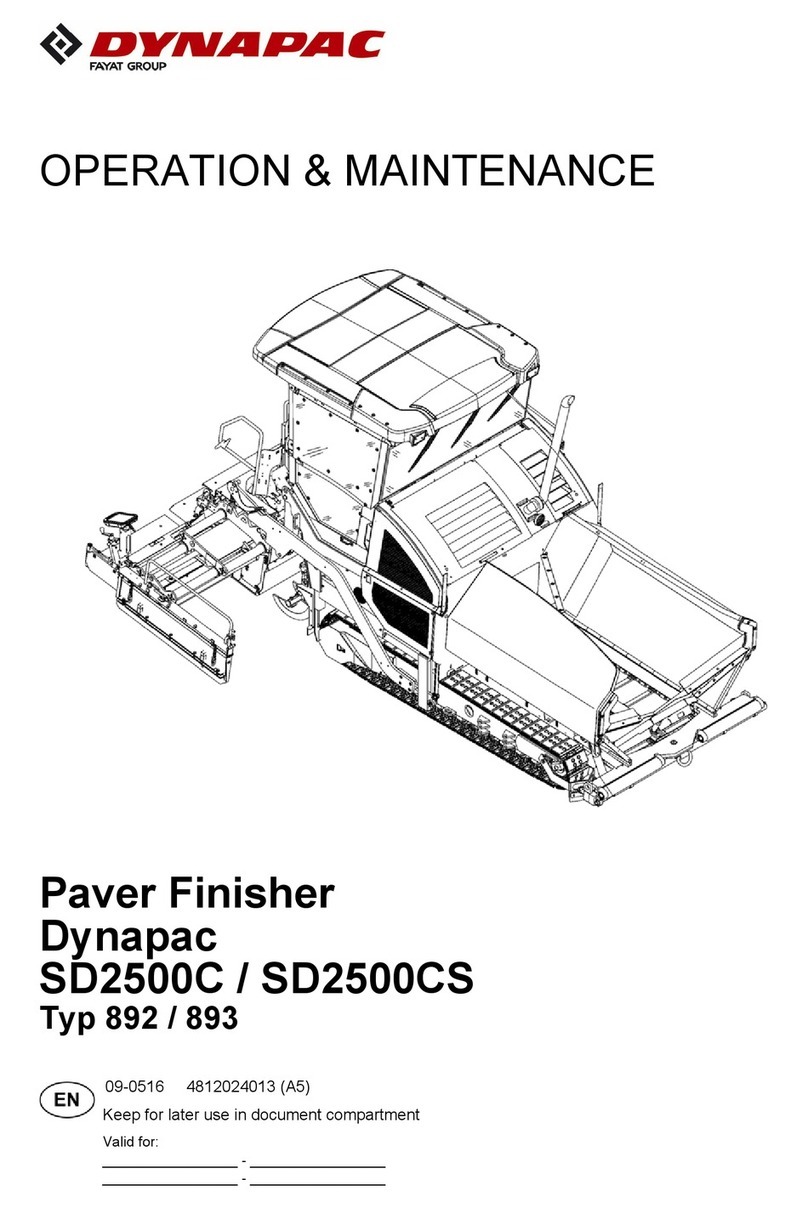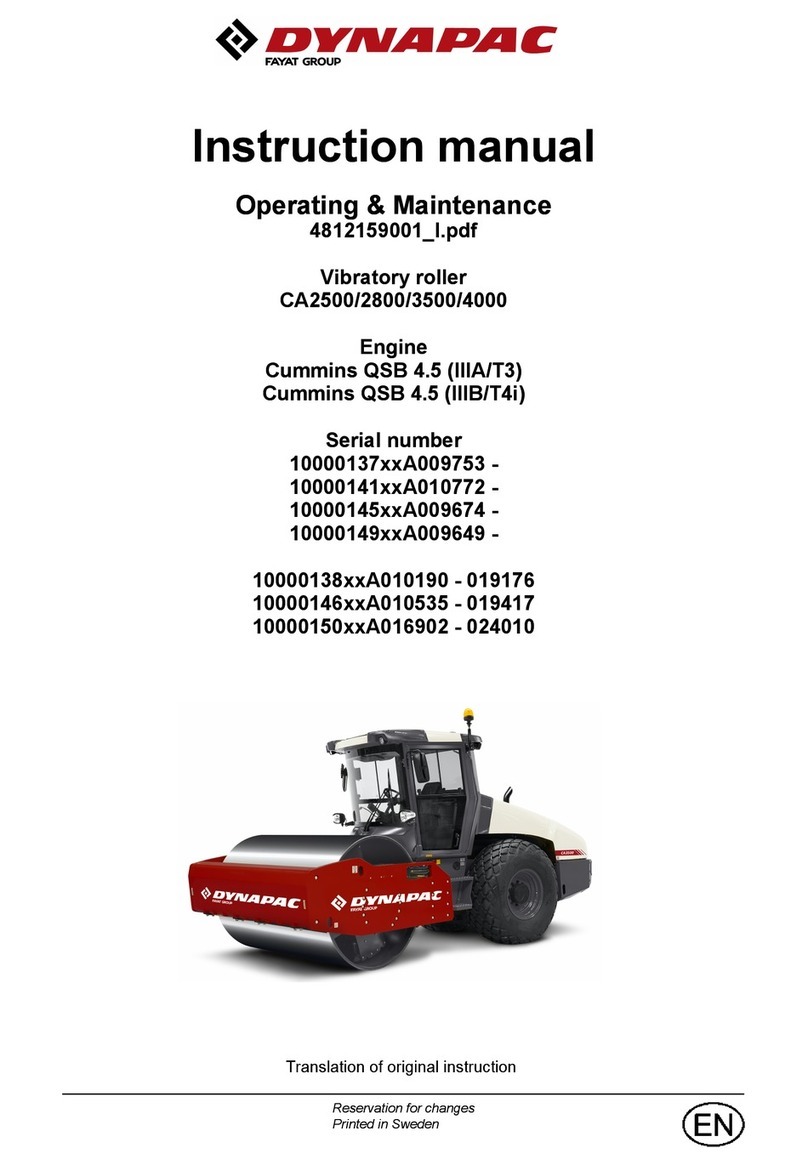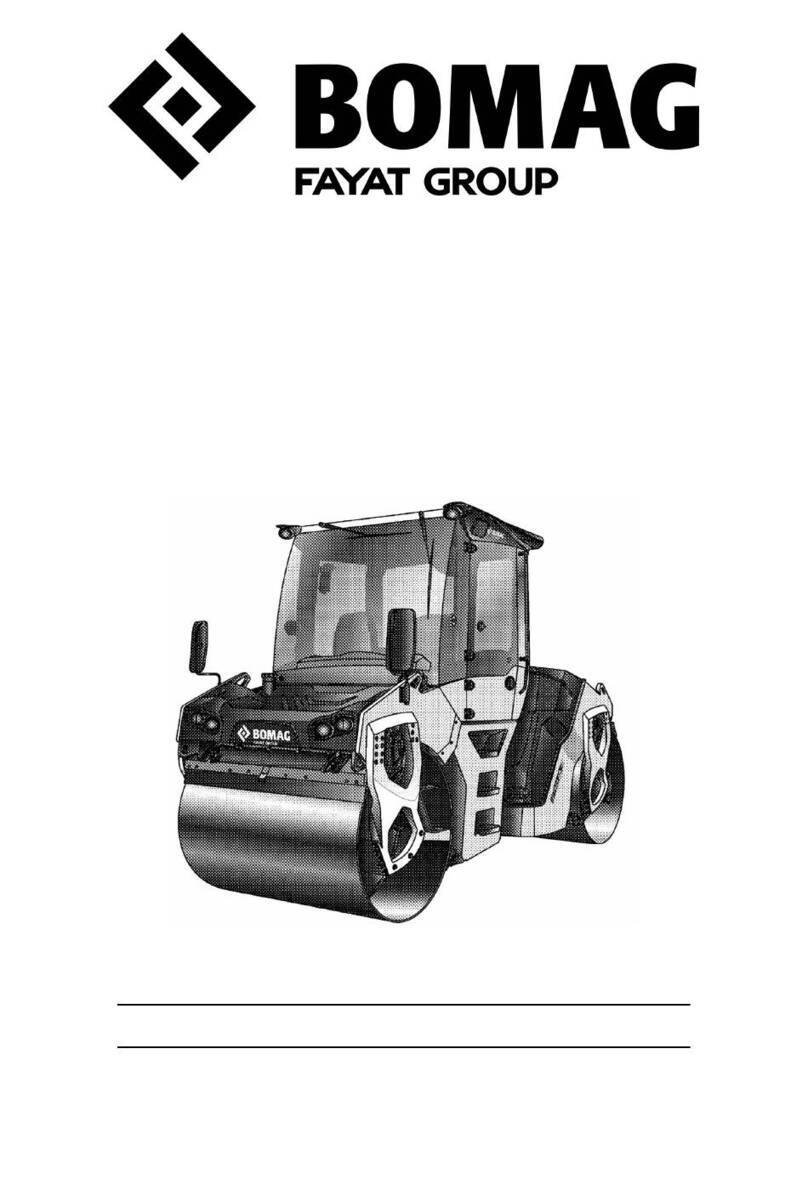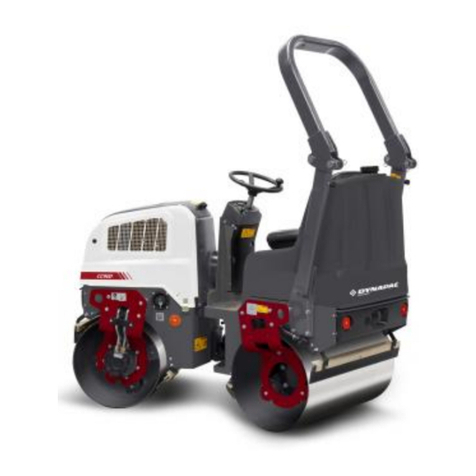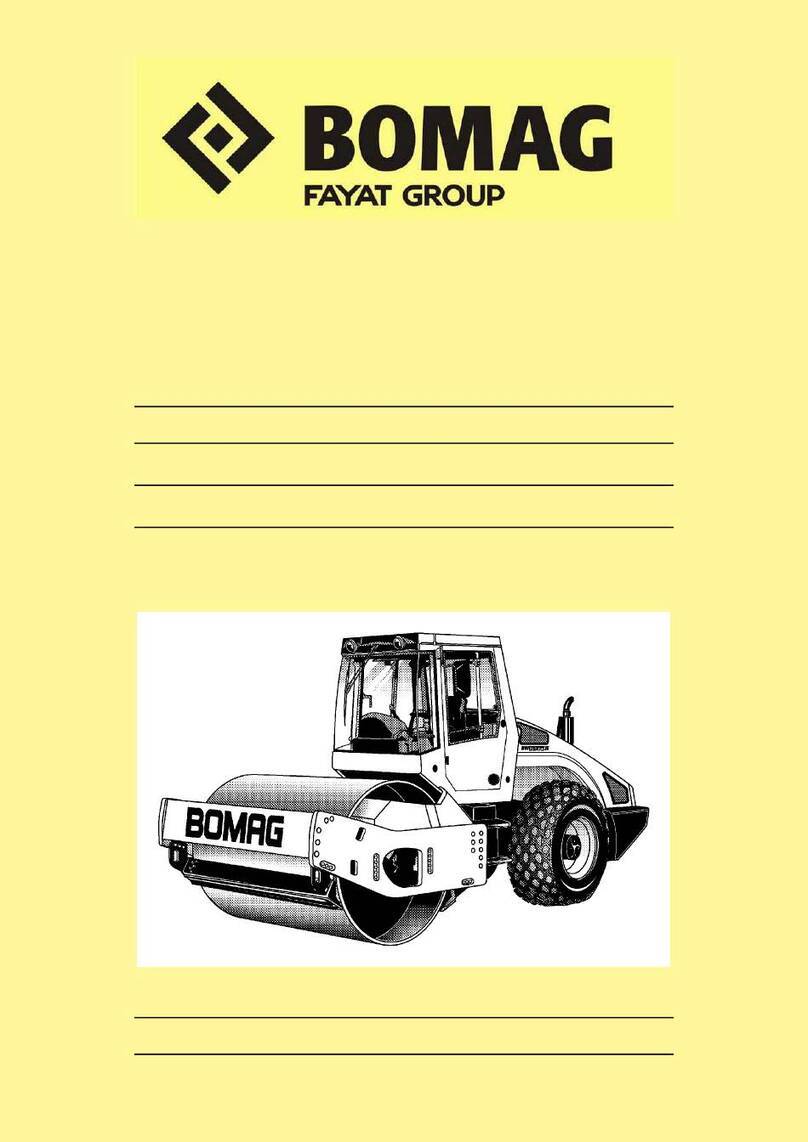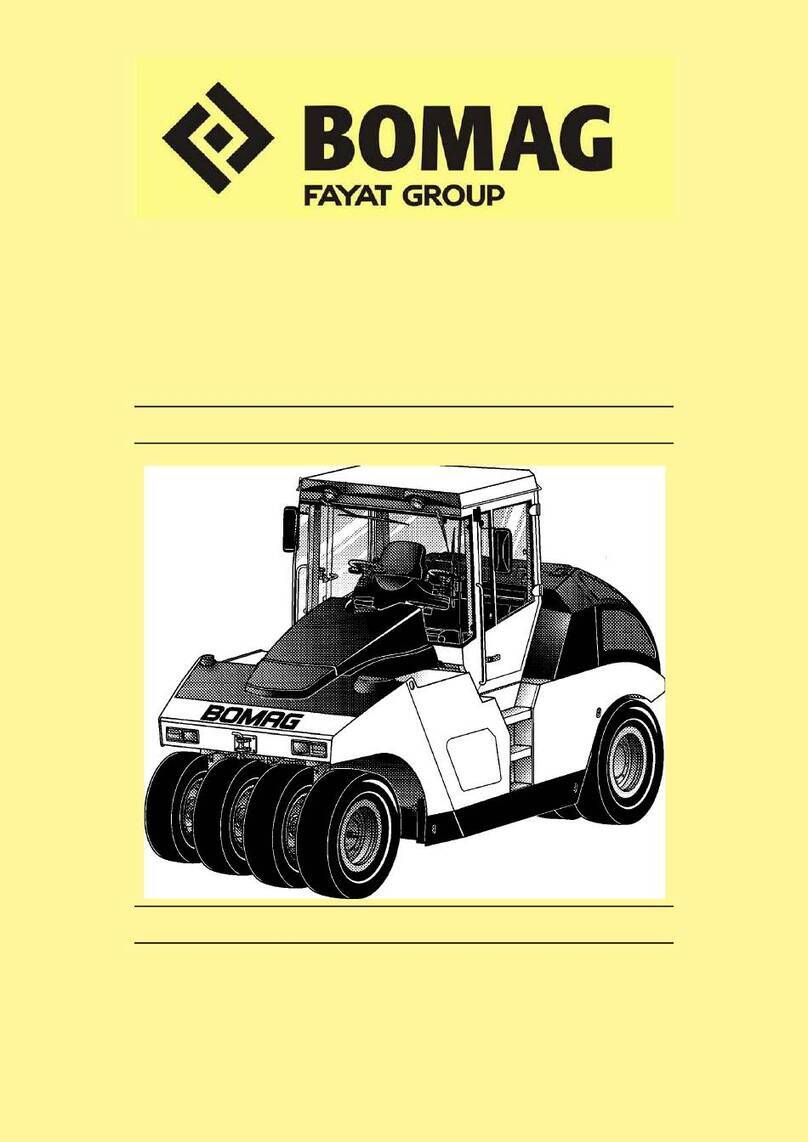
Safety regulations
BOMAG 9008 917 37
1.2
1.2 Safety regulations
Important notes
These safety regulations must be read and ap-
plied by every person involved in the repair /main-
tenance of this machine. The applicable accident
prevention instructions and the safety regulations
in the operating and maintenance instructions
must be additionally observed.
Repair work shall only performed by appropriately
trained personnel or by the after sales service of
BOMAG.
Workshop equipment and facilities as well as the
use and waste disposal of fuels and lubricants,
cleaning agents and solvent as well as gases and
chemicals are subject to legal regulations, which
are intended to provide a minimum on safety. It is
obviously your own responsibility to know and
adhere to these regulations.
This manual contains headers like "Note", "Attention",
"Danger" and "Environment", which must be strictly
complied with in order to inform about and avoid dan-
gers to persons, property and the environment.
Paragraphs marked like this contain technical infor-
mation for the optimaleconomical use of the machine.
Paragraphs marked like this highlight possible
dangers for machines or parts of the machine.
Paragraphs marked like this highlight possible
dangers for persons.
Paragraphs marked like this point out practices
for safe and environmental disposal of fuels and
lubricants as well as replacement parts.
Observe the regulations for the protection of the
environment.
General
lFor repair and maintenance work move the ma-
chine on a firm base and shut it down.
lAlways secure the machine against unintended roll-
ing.
lSecure the engine reliably against unintentional
starting.
lMark a defective machine and a machine under re-
pair by attaching a clearly visible warning label to
the dashboard.
lBlock the articulated joint with the articulation lock.
lUse protective clothes like hard hat, safety boots
and gloves.
lKeep unauthorized persons away from the machine
during repair work.
lTools, lifting gear, lifting tackle, supports and other
auxiliary equipment must be fully functional and in
safe condition.
lUse only safe and approved lifting gear of sufficient
load bearing capacity to remove and install parts or
components from and to the machine.
lDo not use easily inflammable or harmful substanc-
es, such as gasoline or paint thinners for cleaning.
lDo not smoke or use open fire and avoid sparks
when cleaning or repairing a tank.
lWhen performing welding work strictly comply with
the respective welding instructions.
Transport work with cranes and lifting
tackle
Cranes must only be operated by instructed persons
who had been trained in handling cranes.
lFollow the operating instructions of the manufactur-
er when working with cranes.
lFollow the operating instructions of the operator
when working with cranes.
lAlways comply with the applicable accident preven-
tion instructions when working with cranes and lift-
ing tackle.
Precautions and codes of conduct for
welding work
Welding work must only be carried out by properly
trained personnel.
Electric shock!
Sparks, fire hazard, burning of skin!
Infrared or ultraviolet radiation (arc), flashing of
eyes!
Health hazard caused by welding work on highly
alloyed work pieces, metal coatings, paint coat-
ings, plastic coatings, oil containing dirt deposits,
grease or solvent residues, etc.!
lCheck welding equipment and cables for damage
before use (also the validity of inspection stickers).
lEnsure good conductivity between ground cable
and workpiece, avoid joints and bearings.
Find manuals at https://best-manuals.com
